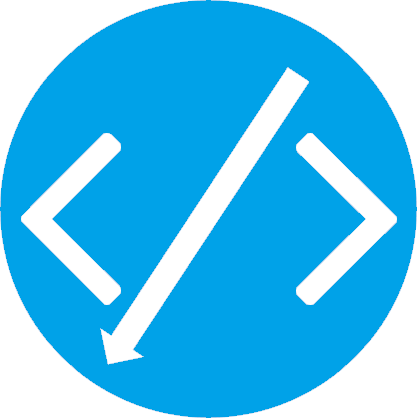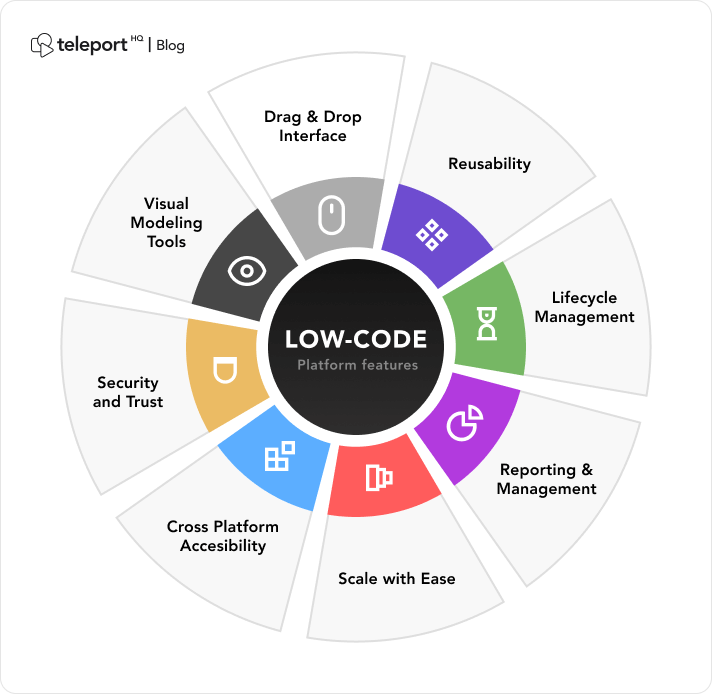Great Suggestions To Picking Low-Code Platform Sites
Great Suggestions To Picking Low-Code Platform Sites
Blog Article
Accessibility Of Low-Code Applications Is One Of The Main Benefits.
Due to a number of factors the development of low-code applications is easier to non-developers. They are commonly referred to as "citizens developers."
Drag-and-Drop Builders: Low-code platforms offer drag-and-drop interfaces which allow non-developers to design applications without needing to write code. This makes the process of development more accessible for people who have no or little technical expertise.
WYSIWYG Editors: "What You See Is What You Receive" editors let users create interfaces and workflows in an approach that is similar to the actual product, which makes it simpler to understand and use.
Simplified Logic Design and Workflow Design
Visual Workflow Modeling: Users can create business processes and application logic using visual flowcharts and models that are more intuitive than traditional coding methods.
Low-code platforms typically come with pre-built logic elements (e.g. the conditional statements, loops), which reduce the need for complicated programming.
Reusable templates and components:
Library of Prebuilt Templates: Low-code platforms typically offer templates from libraries for the most popular types of applications. This gives non-programmers the possibility of starting with a solid basis and modify it as needed.
Reusable Widgets and Modules: Users can leverage reusable widgets and modules to streamline the process of creating them and reducing the requirement for in-depth technical knowledge.
Guided Development and Tutorials:
Step-by-step guide Platforms offer tutorials, tips on screen, and guided development paths to assist non-developers in creating applications.
Interactive Tutorials Interactive tutorials that let you interact with the platform will aid in learning and increase confidence.
Integration with tools already in use
Seamless Integration - Low-code systems can be easily integrated with existing systems and tools for business (e.g. ERP, CRM), allowing even non-developers to create apps that fit into their workflows.
APIs and Connectors : APIs integrated into connectors and APIs enable non-developers and users to easily connect applications to external services without the need for complicated code.
Collaboration Features:
Team Collaboration: Features like real-time collaborative workspaces and shared workspaces allow for non-developers to collaborate effectively with business analysts, developers and other key stakeholders.
Role-Based Access Control: Non-developers can be assigned specific roles, with the appropriate access levels, which ensures they can contribute to the process of development without having to compromise security or functionality.
Automated Testing and Debugging
Built-in Testing Tools: Low-code platforms often come with built-in testing and debugging tools that automate these procedures, making it much easier for non-developers to make sure the application is working properly.
Error Highlighting When errors occur, the platform highlights these and suggests solutions. It guides non-developers in solving the issue.
The primary benefit of low code application development for accessibility to non-developers comes in its ability to democratize the development process. Platforms with low-code enable business users by offering them easy-to-use, visual and guidance tools. They can then actively contribute to the development and maintaining the applications. Follow the top Low-code Platform for application development info for blog info including rad application development, application development platforms, build with docker, application modernisation, mobile development platforms, low code development platforms, cross platform mobile dev, low code platforms, low code platforms, mobile app development platforms and more.
Cost-Effectiveness Is Among The Many Advantages Of Developing Apps Using Low-Code.
Low-code development of applications offers a variety of advantages when it comes to cost-efficiency and efficiency, which makes it an appealing option for businesses looking to optimize their development budgets while delivering high-quality applications. Below are some of the main advantages.
Less Coding Requirements: The low codes platforms remove the requirement for complex hand-coded apps. Developers are able to take less time and energy creating apps. This leads to lower costs of labor.
We need fewer developer resources. Low-code development takes less time and is easier. This means there are fewer developers needed. This could drastically cut costs of staffing and hiring.
Speedier Time To Market
Development speed up Visual development tools as well as pre-built components provided by platforms that use low-code allow rapid application design, allowing firms to bring their products to market quicker. This could lead to quicker revenue growth and improved positioning in the market.
Rapid prototyping: By creating and testing prototypes quickly companies can decrease the time they devote to the process of development and also allow for faster iterations based on user feedback.
Lower Maintenance Costs
Simpler Maintenance: Low-code platforms with their modular components and standardised components make them easier to maintain. This helps reduce maintenance and support cost.
Automated Updates: Many low-code platforms can handle patches and updates automatically and ensure that applications are secure and up-to-date, without the need for large manual intervention.
Efficient Resource Utilization:
Low-code platform contributions let both business users and other non-developers to participate in the creation process. This decentralization of development enables businesses to leverage the skills of a wider variety of employees, while reducing dependence on developers who are highly paid.
IT departments can focus on Strategic Initiatives instead, of being caught up in routine work IT departments are able to focus their efforts on strategic initiatives that improve productivity and efficiency.
Modular Pricing Models that Scale:
Subscription-based Prices: Many lowcode platforms are flexible and have subscription-based pricing models that grow as users use them. This allows businesses to align their expenditure with their real needs and growth.
Pay-as-you-go: Certain platforms allow pay-as-you-go. This allows businesses to only pay for resources that they actually use. This is particularly beneficial for small businesses and startups with limited budgets.
Lower costs for third-party software:
Built-in Functionalities: Low code platforms are equipped with a wide range of built-in functions and integrations, which eliminate the need for third-party tools and software. The cost of subscriptions and licensing fees are also reduced.
Integrations pre-built: These systems and services are integrated with other popular services, which reduces the requirement for custom-designed software, and can save time and cost.
Higher ROI
Increased Return on Investment Accelerating development and lower costs and a quicker time to market, companies can achieve an increased return on their investment (ROI).
Increased Agility: Businesses are able to quickly adapt to changes in the market and demands of their customers and ensure that they remain current and take advantage of new opportunities as they arise.
Low-cost Training:
User-Friendly Interfaces: The nimble, user-friendly interfaces of low-code platforms can reduce the learning curve for new users, eliminating the need for extensive training programs.
Accessible Resources that are accessible. Many low-code platforms provide complete training materials including tutorials, training, and community assistance. They reduce the need to undergo formal training, which is costly.
Collaboration can be made easier.
Enhanced Collaboration Tools : The collaboration tools built-in to the software help in communication and coordination among the team members. This leads to a more efficient project development and lower overhead.
Unified Development Environment : A unified environment simplifies work flows and lowers the cost that are associated with managing different platforms and tools.
Low-code development is cost-effective since it reduces development and maintenance costs. It also accelerates time to market as well as optimizes the use of resources. Pricing models can be adapted. These aspects provide significant economic rewards for businesses. Low-code is a great option for businesses that want to maximize budgets but still build robust, scalable, and quality software. Check out the top rated read this post here about Enterprise application development with Low-code Platform for website tips including app dev platform, application modernisation, rapid applications, app development platform, application modernisation, low code platforms, develop web application, push notifications, multiplatform mobile app development, ms azure sql and more.
Low-Code App Development Offers Numerous Advantages When It Comes To Collaboration And Workflow
Low-code development of applications offers a variety of advantages when it comes to workflow and collaboration, making it the ideal option for companies who want to increase team productivity and streamline the development process. Here are a few advantages.
Unified Development Environment: Low-code platforms provide a single, unifying environment where team members, including business analysts, developers, designers, and stakeholders can work efficiently. This eliminates any silos.
Visual Development: The low-code platform's visual drag-and-drop features make it easy for non-technical team members to contribute to the design process. It also ensures that business requirements are captured correctly and implemented.
Advanced Communication
Real-Time Collaborative Features: A lot of platforms that use low-code offer real-time collaboration features, such as simultaneous editing, comments and instant feedback. These features facilitate collaboration and cut down on back and forth discussions.
Shared workspaces: Teams have the ability to work together in shared workspaces where they can edit and discuss project elements. This will ensure that everyone is striving for the same objectives and are on the same level.
Workflow management simplified:
Built-in Project Management Tools : Low-code platforms typically contain integrated project management software that aids teams organize, track, and manage, and coordinate their development projects. This includes assignment of tasks, tracking progress, deadline management and more.
Workflow Automation: Automation of repetitive tasks and workflows reduces the manual effort and mistakes, allowing teams to focus on more strategic tasks and increasing overall efficiency.
Faster Iteration:
Rapid Prototyping Low-Code platforms are perfect for rapid prototyping. Iterative development is also possible, allowing the team to develop, test and refine their applications in shorter periods. This provides rapid feedback and further improvement.
Agile Development Support: Facilitating agile methodologies allows teams and individuals to work in small steps. This also makes it possible to rapidly adapt to changes.
Accessibility for non-developers
Citizen Development - Low-code platforms offer business users the capability to develop and modify applications with no coding experience. This alleviates the burden of IT as well as development teams and can provide faster responses to business requirements.
Training and onboarding. Tools that are intuitive and comprehensive training materials help the new team member get up-to-speed increasing the overall quality of collaboration.
Centralized Documentation, Knowledge Sharing and Information Sharing
Low-code platforms usually have features for creating, maintaining and storing documentation within their platform. This allows the entire project's information to be stored centrally and easily accessed.
Knowledge Repositories. Teams can establish repositories for knowledge, including templates and components that can be reused. This will facilitate knowledge sharing and decrease duplication.
Consistency and Standardization
Standardized components: Standardized components that are pre-built ensure uniformity in applications. Team members can understand and work better with different components.
Compliance and governance Frameworks built-in for governance ensure that applications are developed in accordance to organizational standards, regulatory requirements, and quality standards. They lower the risk of not being compliant and ensure that the applications are compliant with standards.
Feedback and Improvement Loops
Integrated Feedback Mechanisms: Low-code platforms often provide integrated feedback mechanisms, which allow users to easily provide feedback on applications, which can then be incorporated into the process of development.
Continuous Improvement: The ability to quickly iterate and deploy changes in response to feedback allows for continuous improvement of applications. They are closely aligned to the requirements of users as well as business goals.
Visualization and Reporting
Real-Time Analytics: Built-in analytics and reporting tools give real-time insight into the performance of your project, its progress, and user interactions that allow data-driven decision-making.
Visual Workflow mapping: Visual tools used to map workflows can be utilized by teams to improve workflows. This can help them pinpoint bottlenecks and areas to improve.
Low-code development of applications is a powerful tool for collaboration and workflow. It connects different teams, simplifies communication and streamlines processes. This results in a more cooperative and efficient development environment that ultimately leads to better-performing applications and greater alignment with business goals.